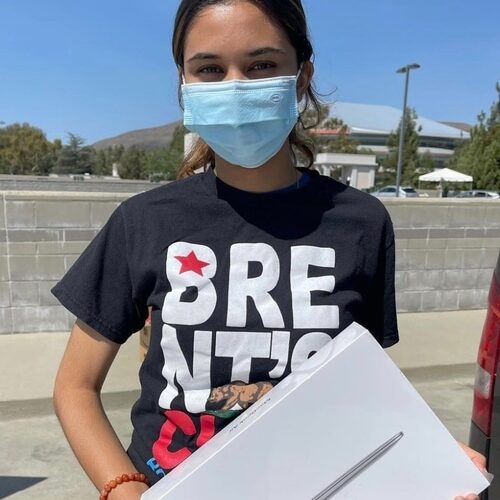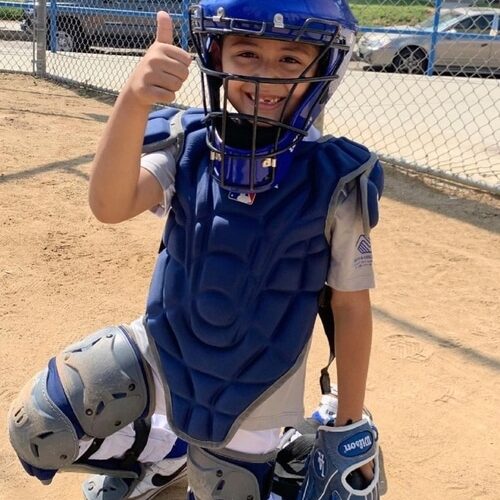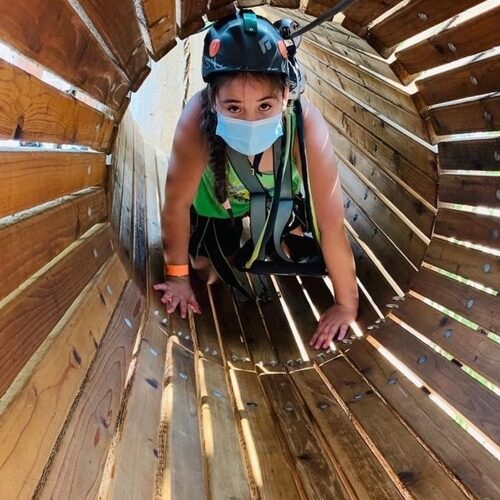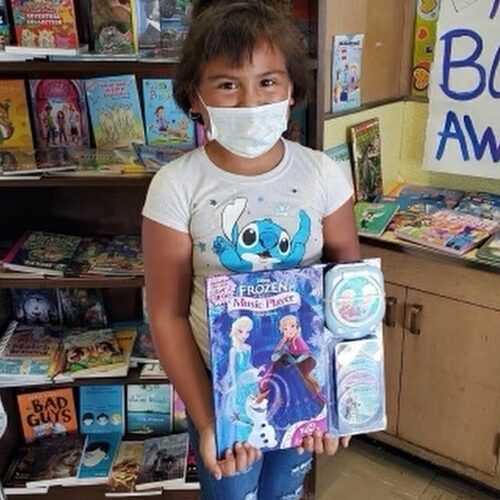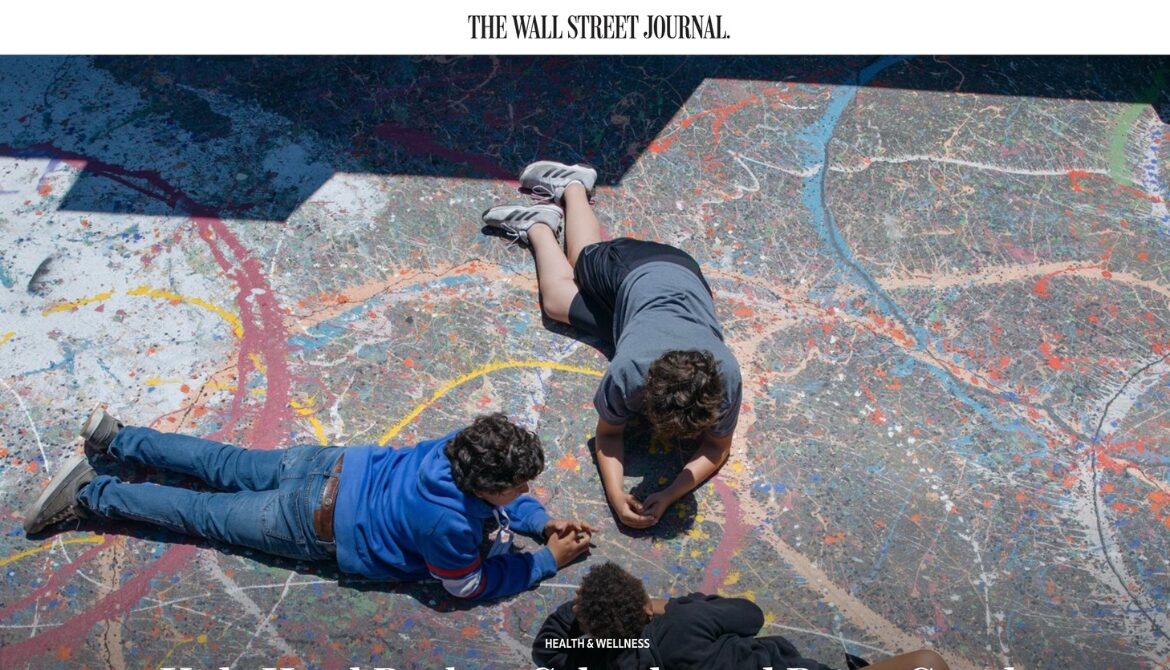
Kids Head Back to School – and Bring Covid-19’s Mental-Health Scars With Them
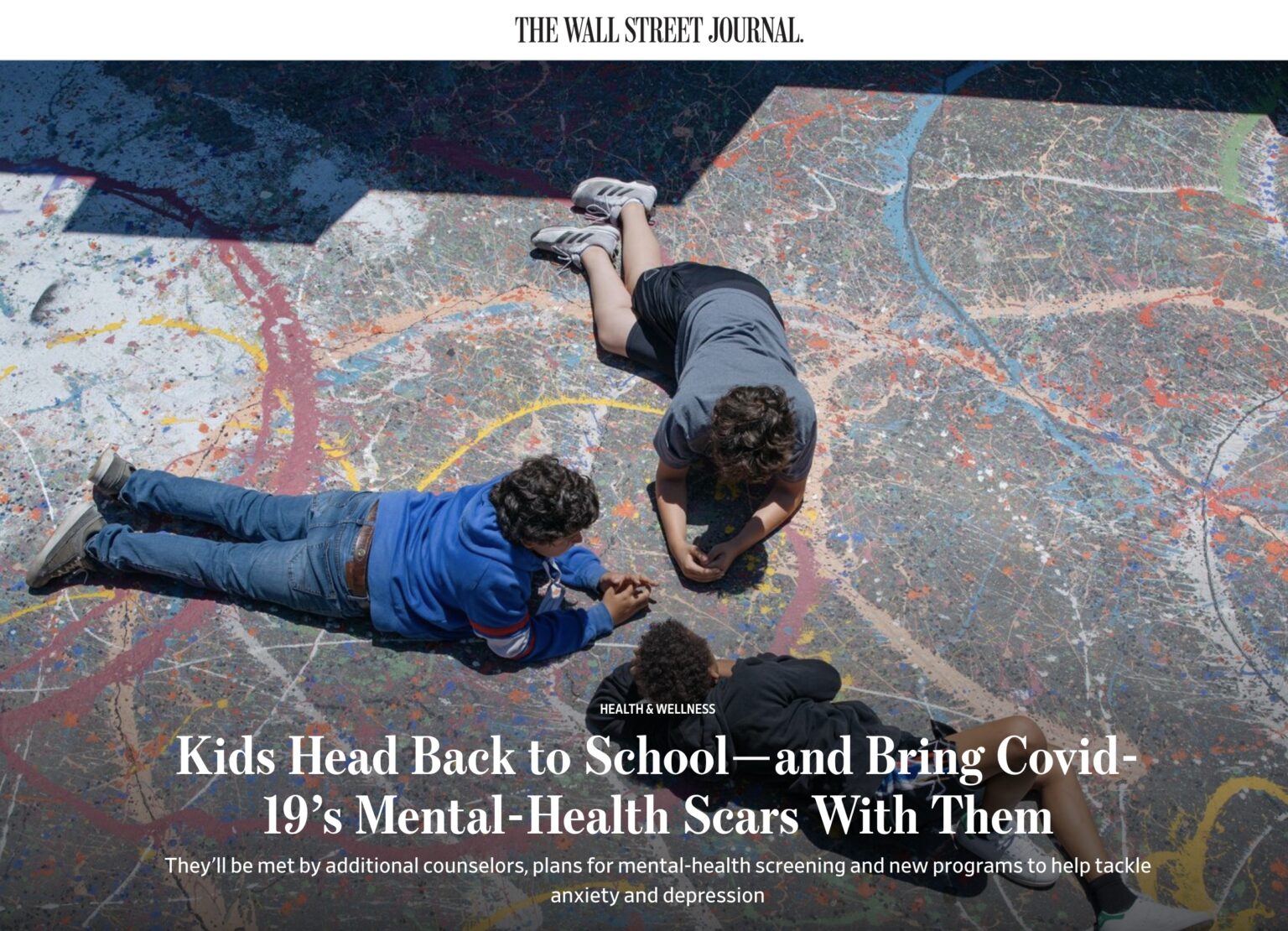
MONTEREY PARK, Calif.—JR Dzubak was breaking up a fistfight between a group of high-school boys in July when he had a moment of doubt. What if he wasn’t doing enough?
The chief executive of a Boys & Girls Club in Los Angeles County has spent the past 18 months watching the pandemic wreak havoc on the mental health of his club’s children. When more kids returned to the club in person in the spring, many seemed listless and distracted, said Mr. Dzubak, who, at 50, has worked for the Boys & Girls Clubs since he was a 16-year-old counselor in training. Children sat by themselves or in small groups. Some kids acted out, cursing and shoving each other.
The club’s counselors have reported that more children and teens are having suicidal thoughts. A few began cutting themselves.
Mr. Dzubak hired a “Kindness Director” to teach the children ways to improve their mood, such as practicing yoga and identifying things they are grateful for. He installed a big blue couch in the game room of the main clubhouse where youngsters could immediately find an adult to talk with.
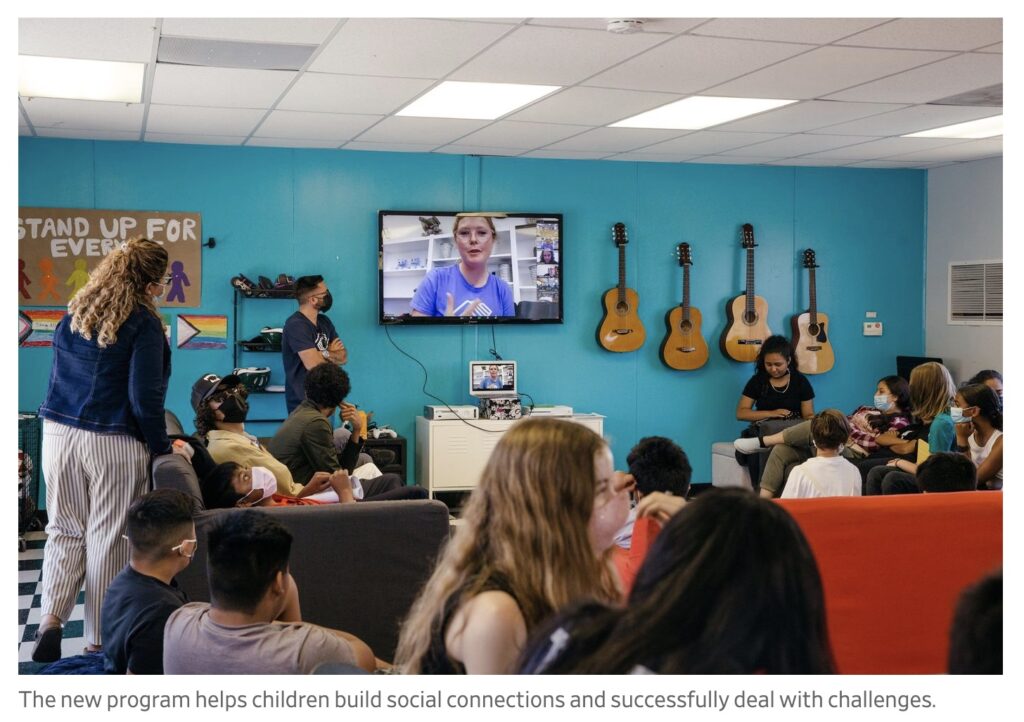
And this summer, he launched the club’s most ambitious project yet, an eight-week program to help middle- and high-schoolers deal with challenges and build social connections. Club staff teach the children to identify problems such as depression and anxiety, and how to ask for help.
As children head back to class, workers at community programs, schools and government agencies are mobilizing to help repair the damage kids suffered during the pandemic. They are hiring additional psychologists and social workers, plan to screen children for mental-health problems and are deploying programs designed to help kids tackle feelings of anxiety and depression.
“Our kids have dealt with so much,” said Mr. Dzubak, who stands out in the suits he wears to work every day. “They’re courageous and are doing the best they possibly can for the little time they’ve been on this earth.”
The club’s mental-health program hasn’t attracted as many children as he had hoped. As the Delta variant has driven Covid cases back up in recent weeks, the children are even more anxious and unsettled. They bombard Mr. Dzubak with nervous questions: “ ‘What’s going to happen? Is the club going to close?’ ”
Schools are focused on the learning gaps created by the pandemic, but there is growing acknowledgment by educators that addressing mental health is critical, too. Anxious and depressed children have a hard time learning. Many educators saw a surge in disruptive behavior when children returned to in-person classes after months of remote or hybrid learning. A lot of schools found that an increasing number of students, some who had family members die or parents lose work, were chronically absent.
The National Academies of Sciences, Engineering, and Medicine is building a free online cognitive behavioral therapy program, funded by a $1 million grant from the Centers for Disease Control and Prevention, to address stress and anxiety children and teens are facing because of the pandemic. Cognitive behavioral therapy teaches people to alter problematic thinking that fuels anxiety and to actively approach situations they fear. Stanford University’s Early Life Stress and Resilience Program is conducting workshops for school employees.
“If you do not attend to mental health, they are not going to be available for learning,” said Sharon Hoover, co-director of the National Center for School Mental Health at the University of Maryland School of Medicine. “There will be acute issues with kids fearing returning to school, depression, PTSD. We anticipate kids are going to struggle for a while.”
Nearly half of 977 parents said they had noticed a new or worsening mental-health issue in their children ages 13 to 18, according to a January 2021 national survey by C.S. Mott Children’s Hospital.
While fewer children are being seen in hospital emergency rooms during the pandemic, a greater share of visits are for mental-health reasons. Between mid-March and mid-October 2020, the number of mental-health related ER visits per 100,000 total visits rose from the year-earlier period by 24%, from 782 to 972, for 5- to 11-year-olds and by 31%, from 3,098 to 4,051, for 12- to 17-year-olds, according to data from the CDC.
The mental-health fallout is hitting kids from all backgrounds, and school psychologists are bracing for what they see as an unmanageable wave of need. The National Association of School Psychologists is advising schools to wait until at least a month into the school year to do schoolwide screenings of students for mental-health problems, to give kids time to adjust and to give some of the schoolwide programs time to work, said Katherine C. Cowan, the organization’s director of communications.

“Every kid is not going to be able to get individual counseling. The systems will drown,” she said. On average there is only one school psychologist for every 1,200 K-12 students.
Shortly after middle- and high-school students returned full-time to Medway Public Schools in Massachusetts in April, “we started to see a lot of attention-seeking behavior, classroom disruption that are really masking what’s going on with students internally,” said Ryan Sherman, the district’s director of wellness. Chronic absenteeism during the 2020-21 school year was double that of a normal year. About 10% of the district’s children opted to stay remote all year.
“The students I worry most about, come fall, they will have been out for over a year and a half,” he said.
This fall, Medway schools will screen seventh and ninth grade students for depression. Every middle schooler who has five or more unexcused absences will be screened for anxiety and depression. The high schools have changed their class schedules so school counselors can come in every few weeks to lead seminars on coping with anxiety and other mental-health issues.
And for those children who are both anxious and chronically absent—meaning they have missed more than 10% of school during the past five weeks—Medway will enroll them in new twice-a-week, five-week-long cognitive behavioral therapy groups.
Atlanta Public Schools is spending nearly $9 million to hire 10 additional school psychologists, 25 new social workers and eight support staff to deal with an expected spike in the need for mental-health services. The district is also spending $1.3 million to screen students for emotional and behavioral issues.
After Atlanta schools resumed in-person learning in January, 60% of families chose to remain virtual. Superintendent Lisa Herring worries about these students in particular, since they may have had difficult experiences that teachers and administrators don’t know about and they have gone so long without in-school mental-health support.
Boys & Girls Clubs of America, a nonprofit with about 4,700 branches that operate after-school programs and summer camps in every state in the U.S., is offering its new resilience-building program at 13 clubs in Los Angeles County.
On a recent Thursday afternoon at the main clubhouse of the Boys & Girls Clubs of West San Gabriel Valley & Eastside in Monterey Park, east of downtown Los Angeles, Alexis Baez, a 24-year-old program director, was aiming to teach 13 middle and high-school students how to turn negative thoughts into positive ones.
“A bad habit we can have is talking to ourselves about ourselves in a negative way,” Ms. Baez, clad in a Boys & Girls Clubs T-shirt, pink sneakers and a face mask, told the youngsters gathered in a small conference room. “We have the power to change this habit into something positive.”
Ms. Baez had written an example of a negative thought on each of four posters that lined the walls. She asked the kids to write positive versions of the thoughts on sticky notes.
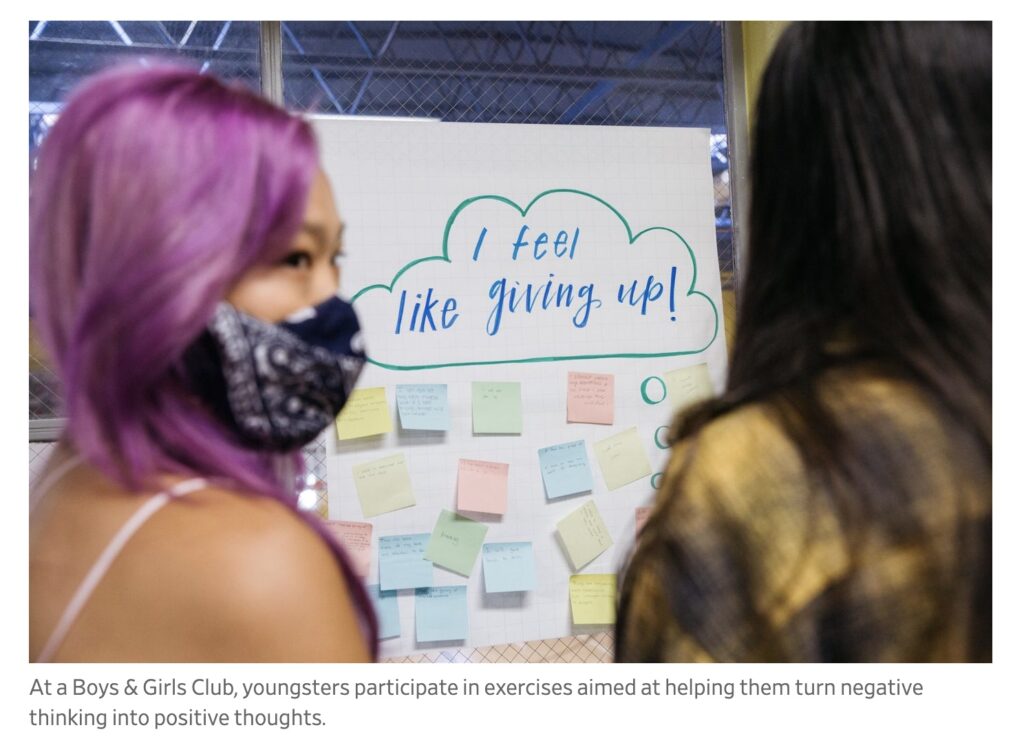
On the poster titled, “I feel like giving up,” 17-year-old Pragya Koirala stuck a pink note that said “I feel like giving up, but challenges are a part of growth.” On the poster titled, “They are so much better than I am,” 15-year-old Ashley Ng’s pink note read, “I will work harder to catch up with them.” On the poster reading, “I have no idea how to do this,” 15-year-old Mia Gutierrez stuck a blue note that said, “I will get past this and I will be able to do this.”
In the early days of the pandemic, when the club was closed to most children, Mr. Dzubak and staffers fielded heartbreaking messages on the club’s voice mail. Some children said they needed food. Others said they were lonely. A few said they faced abusive situations at home. “Some of the calls were, ‘We just miss you.’ Others were very frightening,” said Mr. Dzubak.
Youngsters were scared of getting Covid. One of the club’s own employees died of Covid in December. A rash of anti-Asian violence in the fall of 2020 in the club’s predominantly Chinese immigrant neighborhood shook the community.
The club moved quickly to respond to the children’s needs. Staffers gave out bags of food to families. They did Zoom sessions of popular activities, such as cheerleading and robotics, and held others outdoors in area parks. Throughout the 2020-21 school year, 240 kids spent weekdays at the club attending school remotely. Still, staff lost touch with about one-third of the club’s members. Some moved. Others stopped coming and didn’t return staffers’ calls, emails and texts.
“Personally and professionally, this has been the hardest year of my career,” Mr. Dzubak said.
The new program was originally developed at the Malibu club, which had received a grant from the federal Substance Abuse and Mental Health Services Administration to create an intervention to help children affected by the 2018 Woolsey Fire, a blaze that destroyed about 500 homes in the city of Malibu.
Despite Malibu’s glitzy reputation, about 30% of the children who come to the club qualify for free or reduced-price lunch at school, said Kasey Earnest, executive director of the Boys & Girls Club of Malibu.
The club had been about to launch the program when Covid hit. Staffers modified the intervention to address the pandemic and expanded it to other clubs in the region. The clubs plan to continue offering the course during the school year.
At the Malibu club on a recent afternoon, 14 middle-school students filled in worksheets prompting them to write a personal negative thought—something they think about themselves—and a correlating positive thought that reflects a willingness to learn from mistakes. The club is housed in a handful of bright blue trailers on the grounds of the town’s middle and high school, less than a half-mile from the beach.
Yariel Diaz, 13, wrote that he was bad at doing tricks on a scooter. For his positive comment, he wrote “I’ve gotten better at other things that are hard so I can get better at this one.” Nick Ortiz, 13, wrote that he was “not very good at math.” He also wrote, “If I study, I can and will become better.”
Many of the middle schoolers stayed quiet during the discussion. When Violet Miehle, 27, the teen center director, called on two girls and asked them how the exercise had made them feel, one replied, “I don’t know.” Ms. Miehle gently pushed, asking the girls if they wanted to share what they had written. They shook their heads ‘no.’ One girl put her head down on the table. Ms. Miehle said the kids became more talkative as the weeks went by.
There are no scientific studies on the Boys & Girls Clubs intervention. But the program includes elements of psychological approaches that have been found to reduce symptoms of anxiety of depression in children. Psychologists and educators are also looking to treatments that have been used to address the mental-health fallout of other disasters that, like the pandemic, affect entire communities and cause widespread disruption to people’s lives, such as hurricanes, fires and the 9/11 terrorist attacks.
Children who received psychological treatment after a disaster had a 66% greater improvement in post-traumatic stress disorder symptoms, such as nightmares and difficulty sleeping, compared with those who didn’t receive treatment, according to an examination of 24 studies involving 2,630 children published in 2014 in the journal Current Psychiatry Reports.
At the club in Monterey Park, Ashley, who participated in the positive thought sticky note exercise led by Ms. Baez, was excited about heading back to high school in person for her junior year. But she was also “kind of dreading it at the same time,” she said ahead of her first day of school on Aug. 11.
“I haven’t been around a bunch of people in a long time. My social skills have gone down the drain,” she said. During the months of online learning, she found it tough to stay motivated about her schoolwork and struggled with loneliness.
She said spending time with other teens at the club this summer has helped her prepare for the new school year. “I’m getting there,” she said.
Ms. Baez sees Ashley’s progress during the course as a success. At the beginning, Ashley was quiet and didn’t participate much in the group conversations, Ms. Baez said. Eventually, she opened up and was able to share what she has been through over the past 18 months and her worries for the future.
“Over the weeks she started talking more and not being so timid,” Ms. Baez said. “It was great to see that kind of breakthrough.”
Read more here: https://www.wsj.com/articles/covid-pandemic-mental-health-schools-depression-anxiety-11630333260

